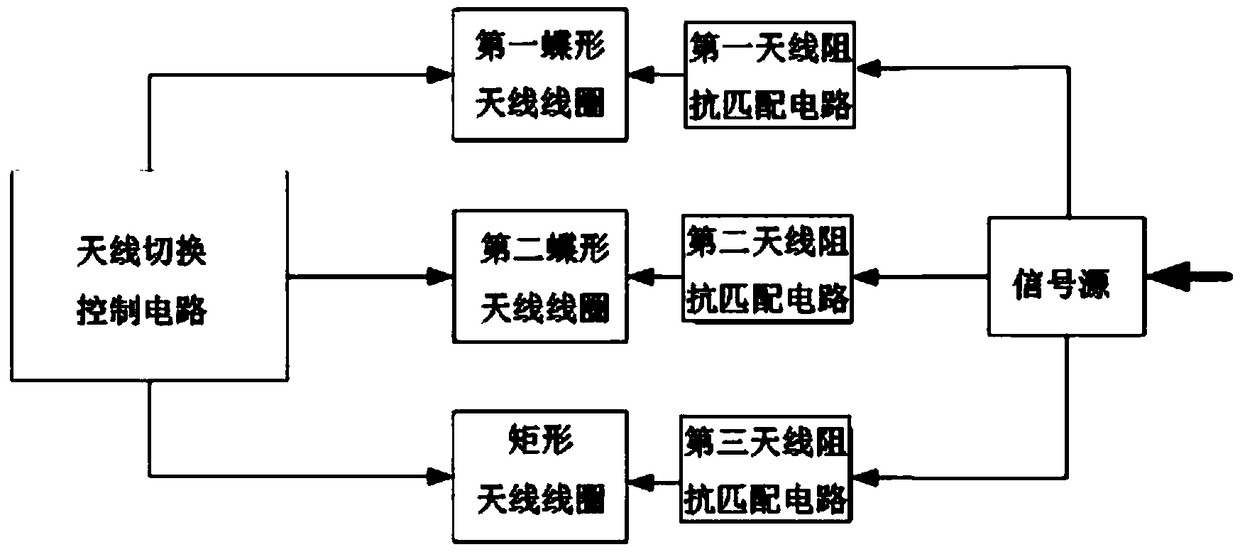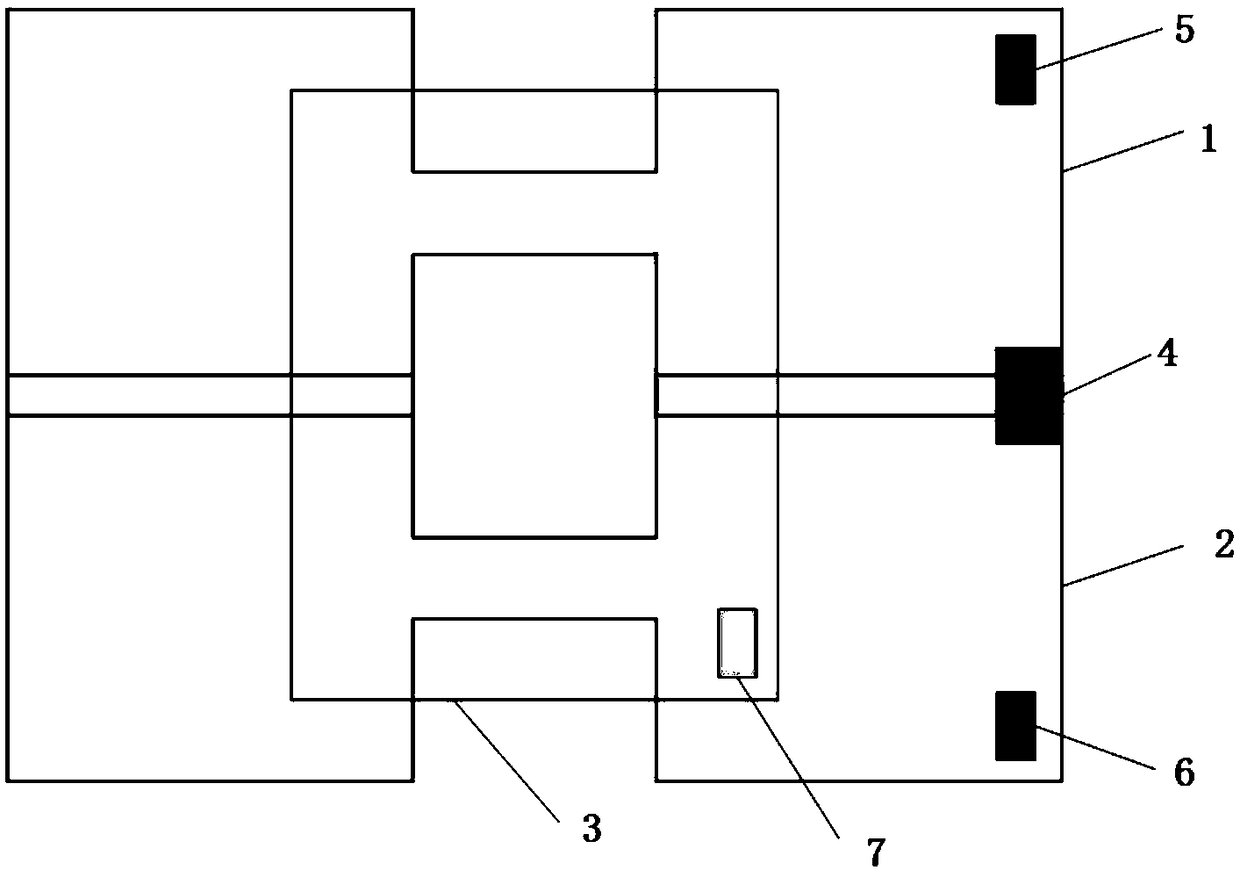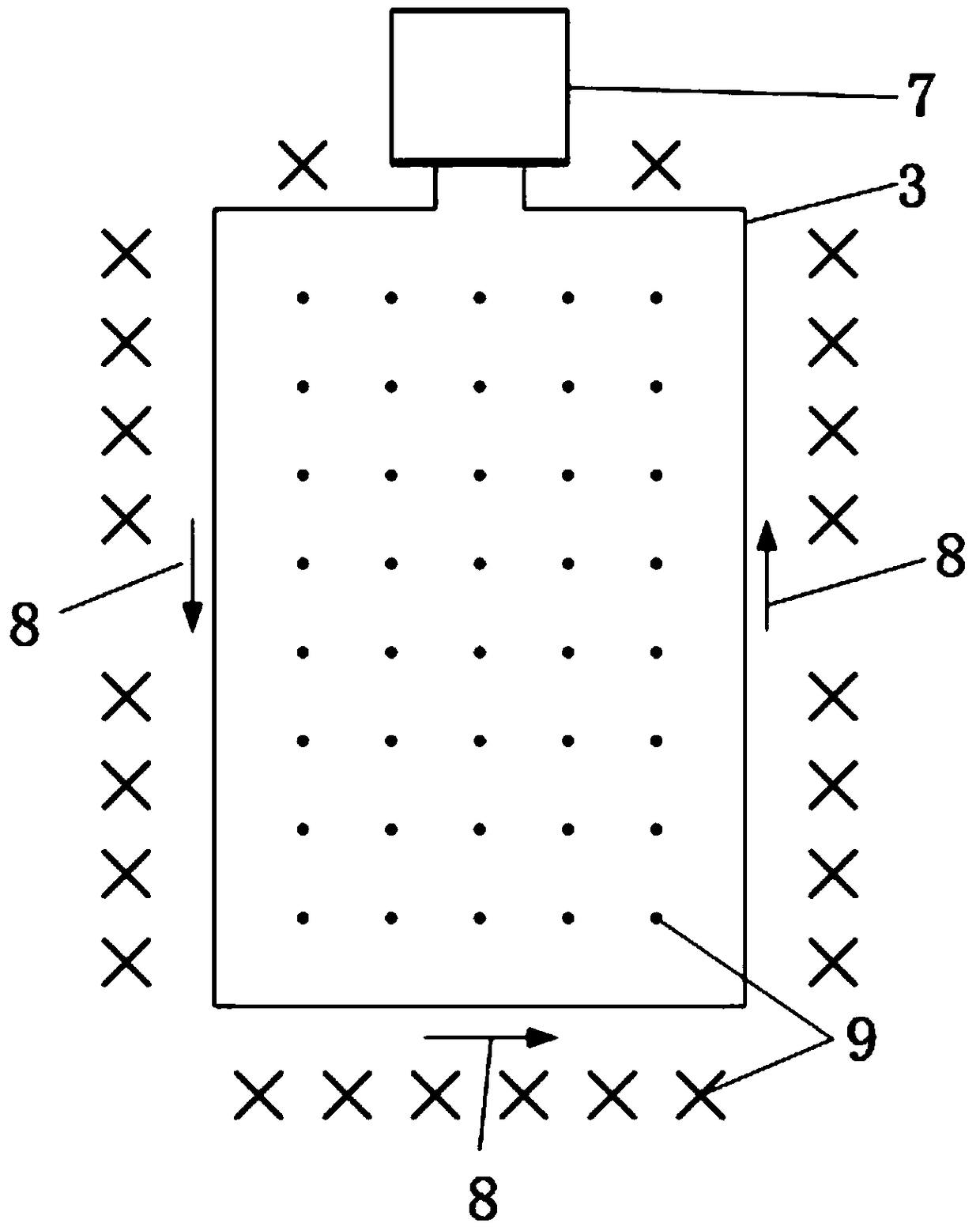Antenna for remote tag identification
A long-distance, tag technology, applied in the field of antennas for long-distance reading of tags, can solve the problems of heavy police burden, limited security inspection methods, and personnel detention.
- Summary
- Abstract
- Description
- Claims
- Application Information
AI Technical Summary
Problems solved by technology
Method used
Image
Examples
Embodiment 1
[0022] Such as Figure 1-2 As shown, an antenna for long-distance reading tags includes a first butterfly antenna coil 1, a second butterfly antenna coil 2 and a rectangular antenna coil 3, the first butterfly antenna coil 1 and the second butterfly antenna coil 2 Relatively arranged and partially overlapped, the rectangular antenna coil 3 is located in the middle of the area formed by the first butterfly antenna coil 1 and the second butterfly antenna coil 2; the first butterfly antenna coil 1, the second butterfly antenna coil 2 and the rectangular antenna coil 3 are respectively connected to the signal source through the first antenna impedance matching circuit 5, the second antenna impedance matching circuit 6 and the third antenna impedance matching circuit 7; the first butterfly antenna coil 1, the second butterfly antenna coil The antenna coil 2 and the rectangular antenna coil 3 are all connected to the antenna switching control circuit 4, and the antenna switching con...
Embodiment 2
[0031] Such as Figure 7 As shown, in this embodiment, two antennas 100 for long-distance reading tags described in Embodiment 1 are symmetrically installed on both sides of the passage door consisting of two non-metallic door panels 101 with a distance of 70 cm and a top cabinet 102 .
[0032] In order to realize the long-distance reading of the antenna, it is necessary to increase the area of the antenna coil and expand the range of the magnetic field generated by the antenna coil, so that the 13.56MHz RFID tag can still couple enough energy from the magnetic field far away from the metal coil to activate the chip in the card body . For a metal coil loop with radius R, when the number of turns is N, the magnetic field strength at a distance x from the coil is:
[0033]
[0034] Since the magnetic field strength and the coil radius R are not in a linear relationship, in order to mathematically obtain the relationship between the maximum magnetic field strength and the ...
PUM
 Login to View More
Login to View More Abstract
Description
Claims
Application Information
 Login to View More
Login to View More - R&D
- Intellectual Property
- Life Sciences
- Materials
- Tech Scout
- Unparalleled Data Quality
- Higher Quality Content
- 60% Fewer Hallucinations
Browse by: Latest US Patents, China's latest patents, Technical Efficacy Thesaurus, Application Domain, Technology Topic, Popular Technical Reports.
© 2025 PatSnap. All rights reserved.Legal|Privacy policy|Modern Slavery Act Transparency Statement|Sitemap|About US| Contact US: help@patsnap.com



